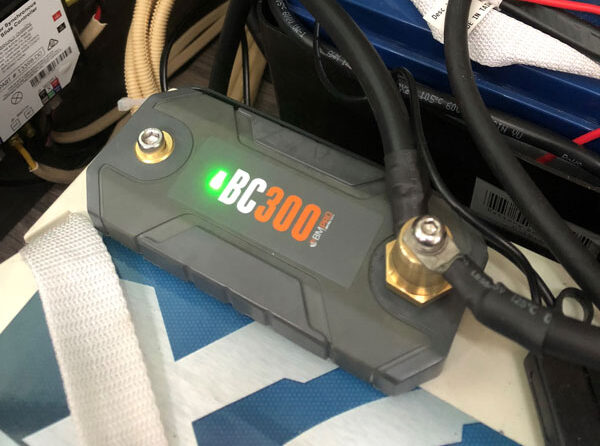
12V Guru – Uncover Your Battery’s Secrets
What’s going on with my batteries? Our 12V Guru discusses how shunts can help you track your batteries activity
This month we saw an opportunity to expand upon a topic which many have enquired about (including our reader Graham a few months ago) powering a second fridge which will alternate between the RV and the towing vehicle – depending upon the trip which is being undertaken. With the right setup this provides countless options to have fresh food and drinks regardless of whether you are towing on this trip or simply exploring in your vehicle.
The option described this month enables you to have the versatility to disconnect your RV and head off to explore local wonders that would not be accessible if towing, or it may be simply heading off to the weekend farmer’s market. The solution also enables the versatility for whole family adventures or simply getting a weekend away with mates.

Whilst last month we discussed powering your fridge from the RV’s installed Power Management System, it is also possible to power a portable fridge (freezer) with a setup from your vehicle. Essentially what you will need is a secondary battery installed in your vehicle either up under the bonnet or in the rear cargo area.
Space permitting, the simplest of setups is the installation of a lead acid battery (normally around 100Ahr) under the front bonnet in the engine bay. Ensure the battery is a deep cycle style and not a cranking battery as they perform and last very differently. Appreciating it is getting more and more difficult to find suitable space under the bonnet, it may take some exploring to find a better location in the rear cargo area – normally around the wheel arches especially if storage boxes and drawers are installed.
One of the most important aspects is to ensure that the wiring is suitably protected from travel gear. Loose connection and inadvertently shorting of the circuitry will only lead to frustration. Regardless of location, ensure the battery is appropriately secured. A 28kg battery brick will cause substantial damage if left loose. Recently popular are slimline Lithium batteries which can be fitted under and behind rear seating creating a neat, secure and ergonomically. Most common is a 12V/100A SLA battery installed fore or aft of the rear wheel arch in the cargo area.
The cheapest and simplest option is running appropriately sized wiring from the primary (starter) battery and installing a voltage regulator between the two batteries that enables amperage to pass through to the secondary battery when the voltage is lower. This will allow a very simple charge but may not be optimal to fully charge the battery or maintain the appropriate ongoing charge. It is the preferred method to install a DC-DC charger as this will charge the secondary battery at the correct voltages and therefore ensure battery is properly charged and maintained correctly. Most are not suitable for under bonnet installations and therefore are installed closer to the battery in the rear of the vehicle. Good practice is to install the charger closer to the secondary battery being charged as it prevents potential wiring issues. Ensure suitable fusing is installed to protect the wiring – a 30 or 40Amp fuse depending on the charger size.
Second consideration is your wiring to the fridge from the secondary deep cycle battery. Most fridges are supplied with a cig lighter connector for the 12V however these are generally cheaply made and therefore don’t offer a reliable connection due to vehicle vibration. Highly recommend modifying the fridge cable to an Anderson style connector. Install a reciprocal one inside the vehicle cargo area from the secondary battery close to where the fridge will be carried and then parallel a secondary connector mounted at the rear of the tow vehicle. Ensure that this has a dust proof rubber cover to protect the terminals from dust and corrosion.
Last consideration is to install a suitably sized fuse on the positive side of the secondary battery output before the Anderson style connector to the fridge. This will protect the fridge and the wiring should something go wrong on this side of the circuit, especially if there is 4-5m of cable running through the A-frame area to the boot of the caravan.
Safe travels with cold fresh food and drinks regardless of how you travel.
Cheers!

What’s going on with my batteries? Our 12V Guru discusses how shunts can help you track your batteries activity

An electrical shunt is a critical component in electrical circuits. Find out why it’s important and how it functions right here.

Our 12V Guru discusses what to look for in safety and functionality with 12Volt wiring when looking at second hand vans
